Divest Invest Protect is honored to be uplifting and working with: Victoria Maranda - Mashpee, Andre Gaines - Nipmuc, Tracy Holmes - Aquinnah, Lilah Akin - Penobscott, Maggie Conners - St. Regis Mohawk, Melvin Coombs - Mashpee and Rena Maliszewski - Rappahannock.
Victoria Miranda Wampanoag states, “My people once used wampum as a form of economic exchange, but for us its significance runs deeper than just its economic use. As with many tribes, the land that we inhabit shapes our tribal culture. For my tribe, we center around the ocean and the water. The water is how we survived as it blessed and continues to bless my people with enumerable gifts to include wampum. Wampum has become a symbol of my people and a symbol of the many blessing that we get from the water.” -
The workshops aim to reconnect to indigenous knowledge and customs in order to imagine an economic future for humanity that doesn’t center the banks of Wall Street. The workshop uses Wampum as a means of decolonizing value, wealth, trade, and economic rights to protect, restore, and revitalize indigenous peoples knowledge and visions of law, justice, and economy.
Wampum is the bead cut from the Quahog shell, its distinctive purple and white bands create beautiful natural diversity in the material, which can be smoothed to a high polished shine. The Quahog clam is geographically limited to the coastal waters between Maine and Long Island and was harvested for food and made into jewelry by the coastal peoples of the North Eastern region. Culturally Wampum was used as far south as the Carolinas, inland throughout the Great Lakes region and north into the Canadian Maritimes. Small tubular beads were woven into “belts” creating patterns by alternating between purple and white beads. These “Wampum Belts” were often created as treaties between Tribal Nations and held value beyond the material, these beads also symbolized ongoing commitments to reciprocity. The Wampum bead was more than just a bead, it was also a promise, a memory, a sacred language of the past and future.




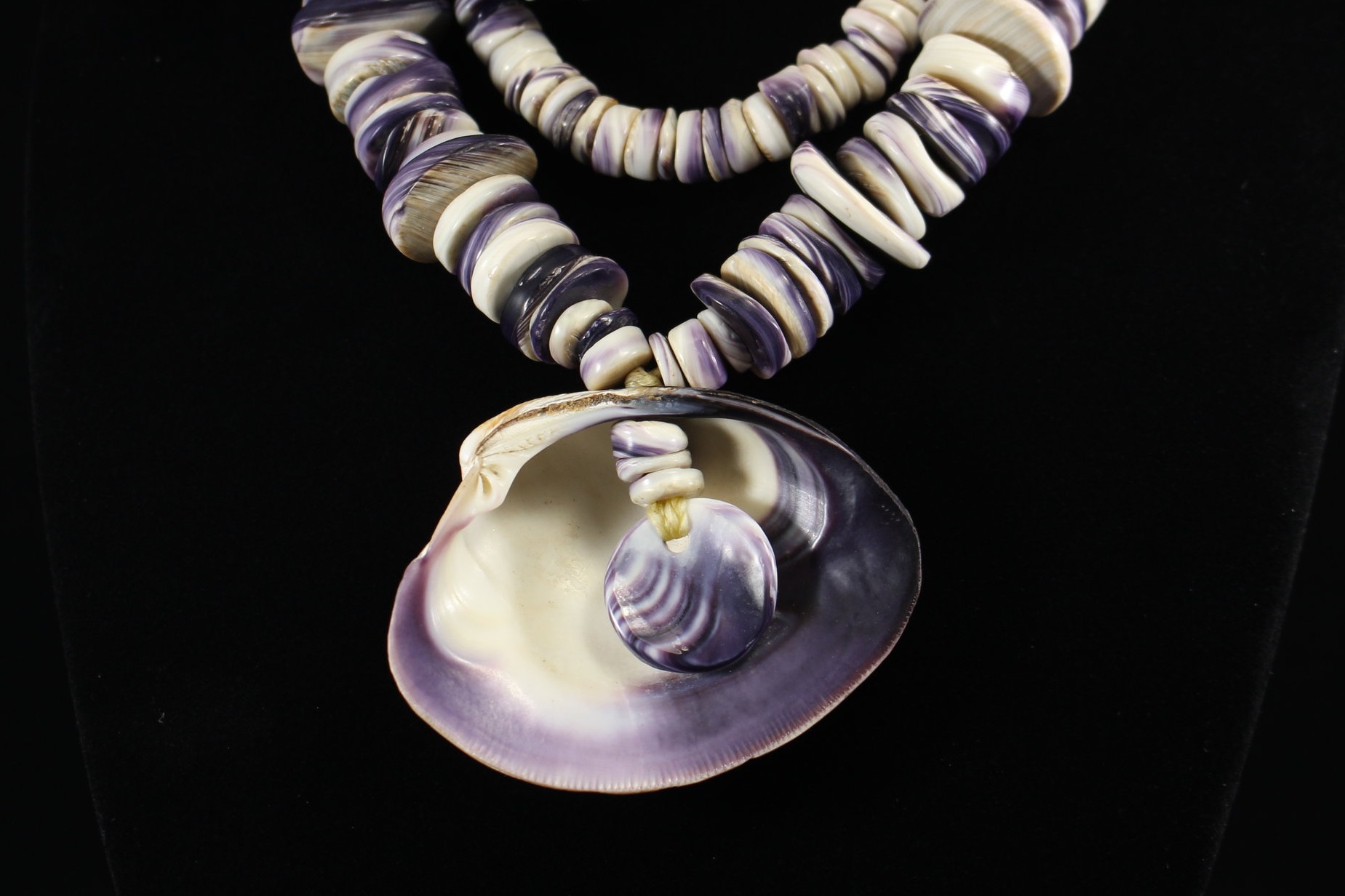
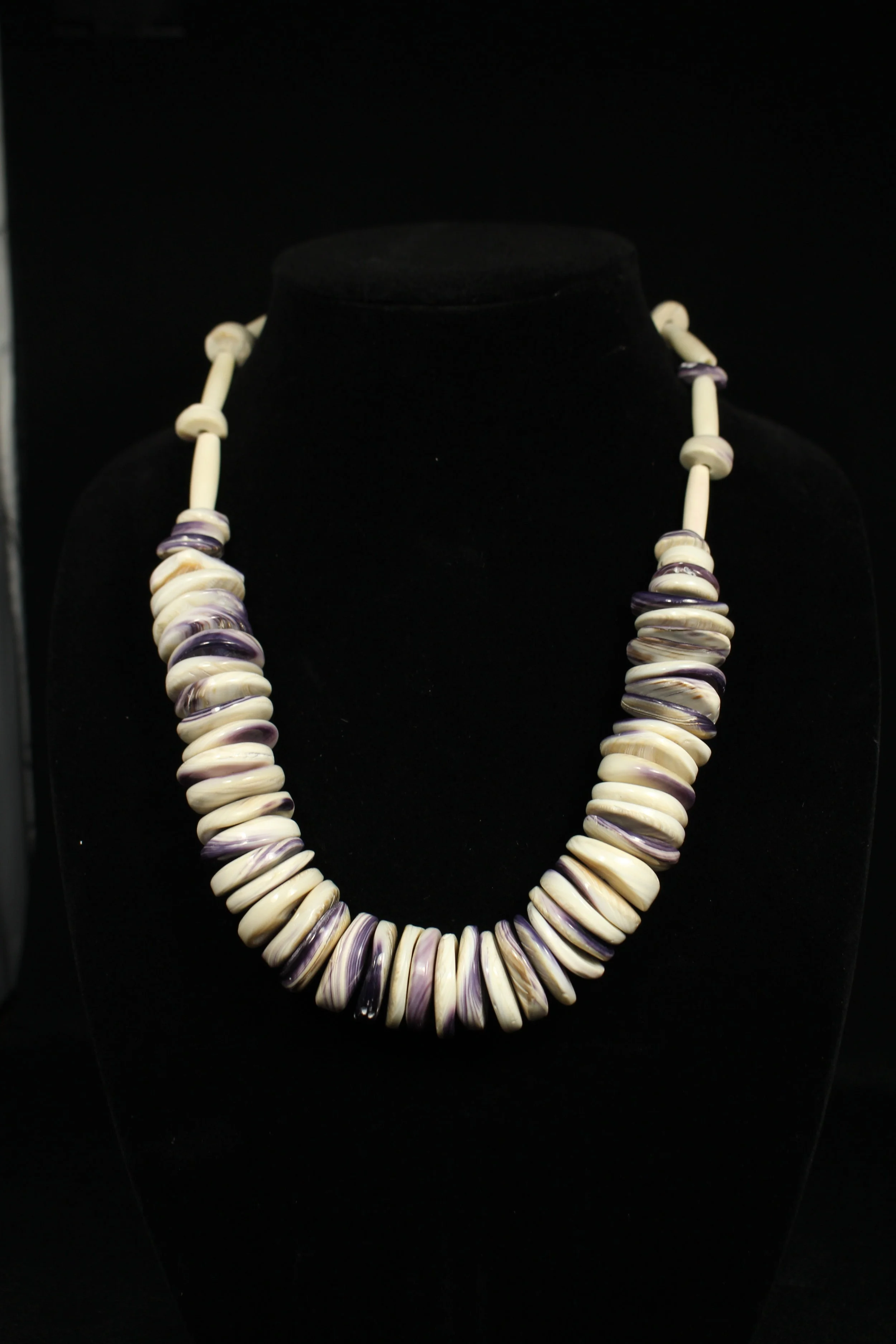
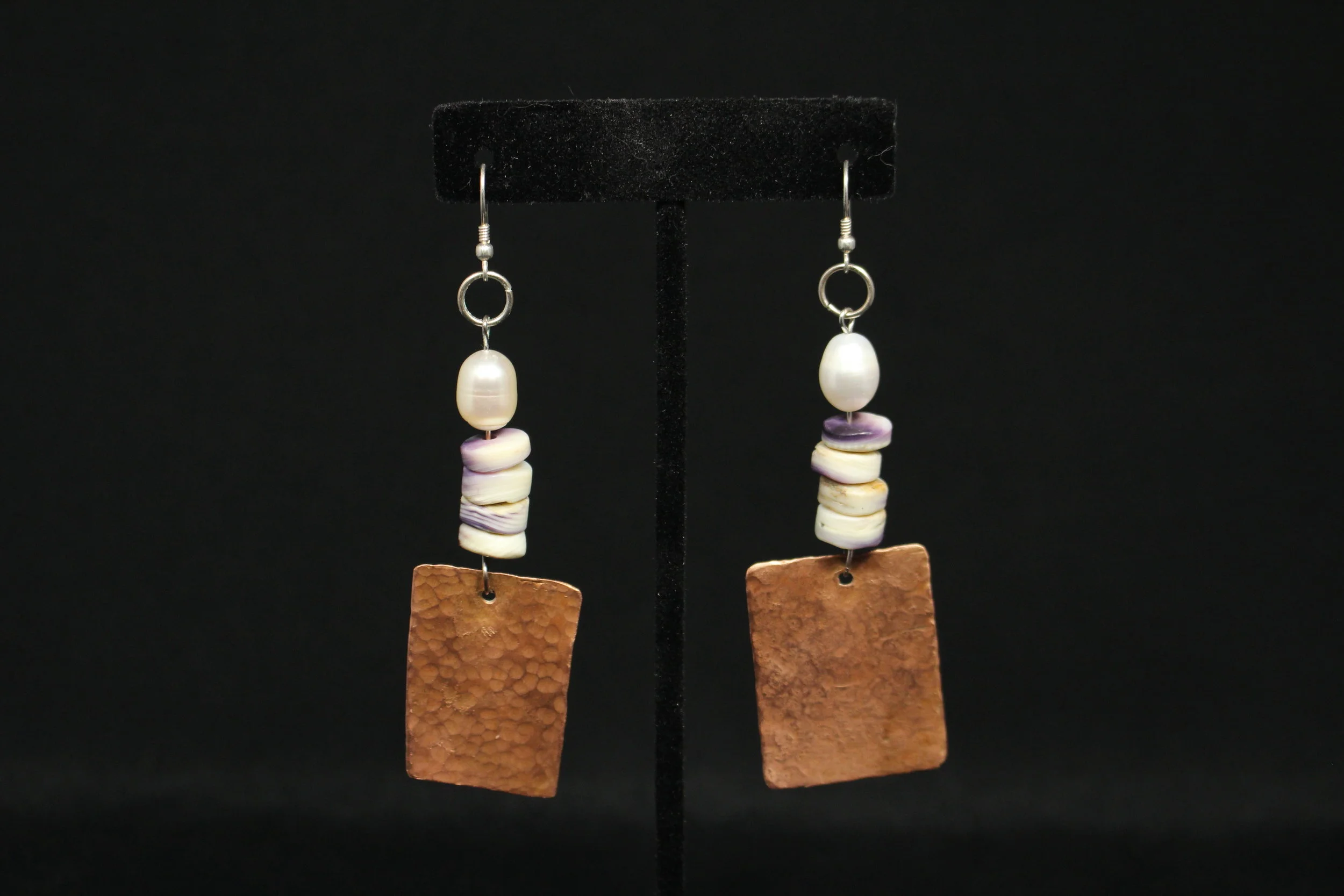
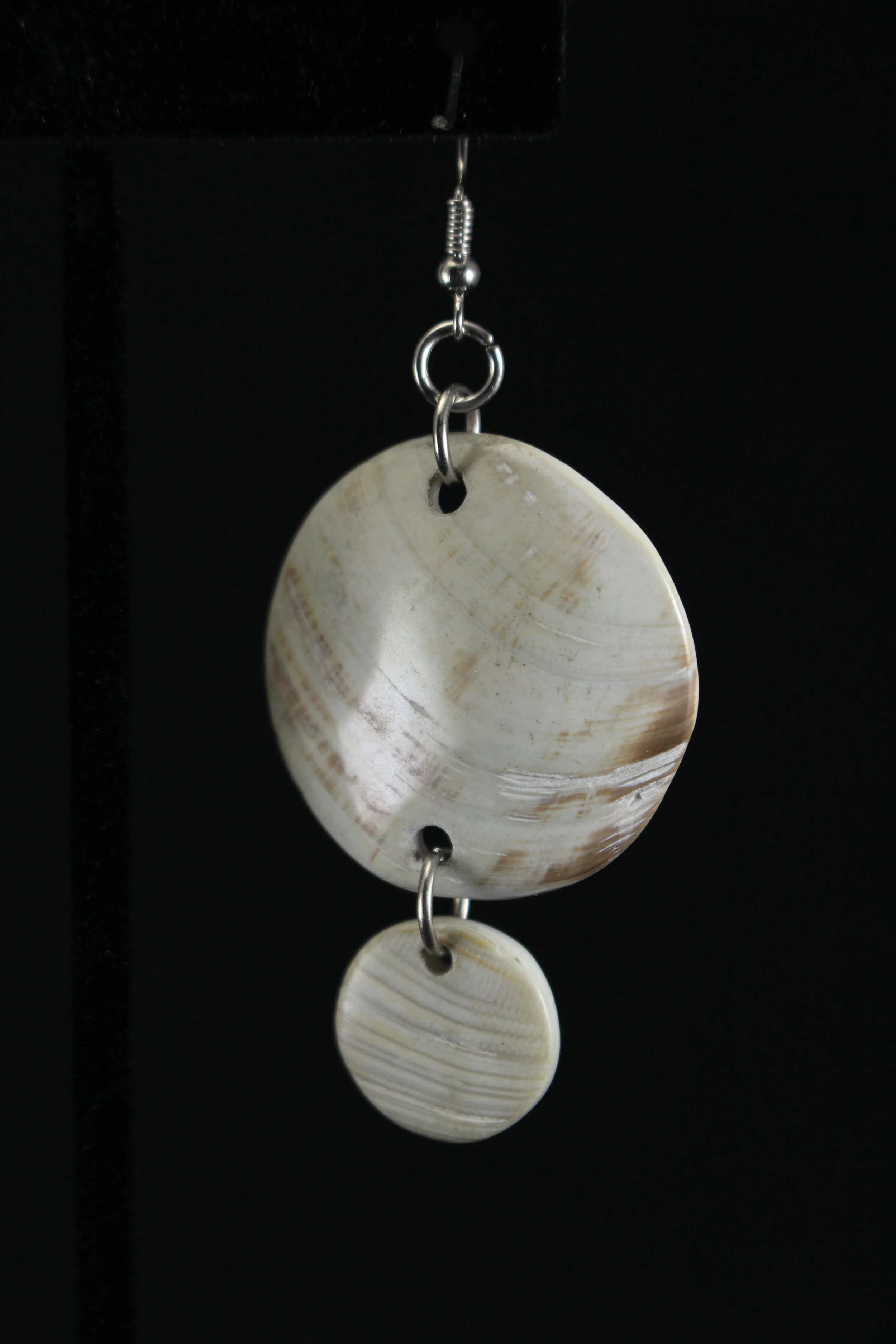
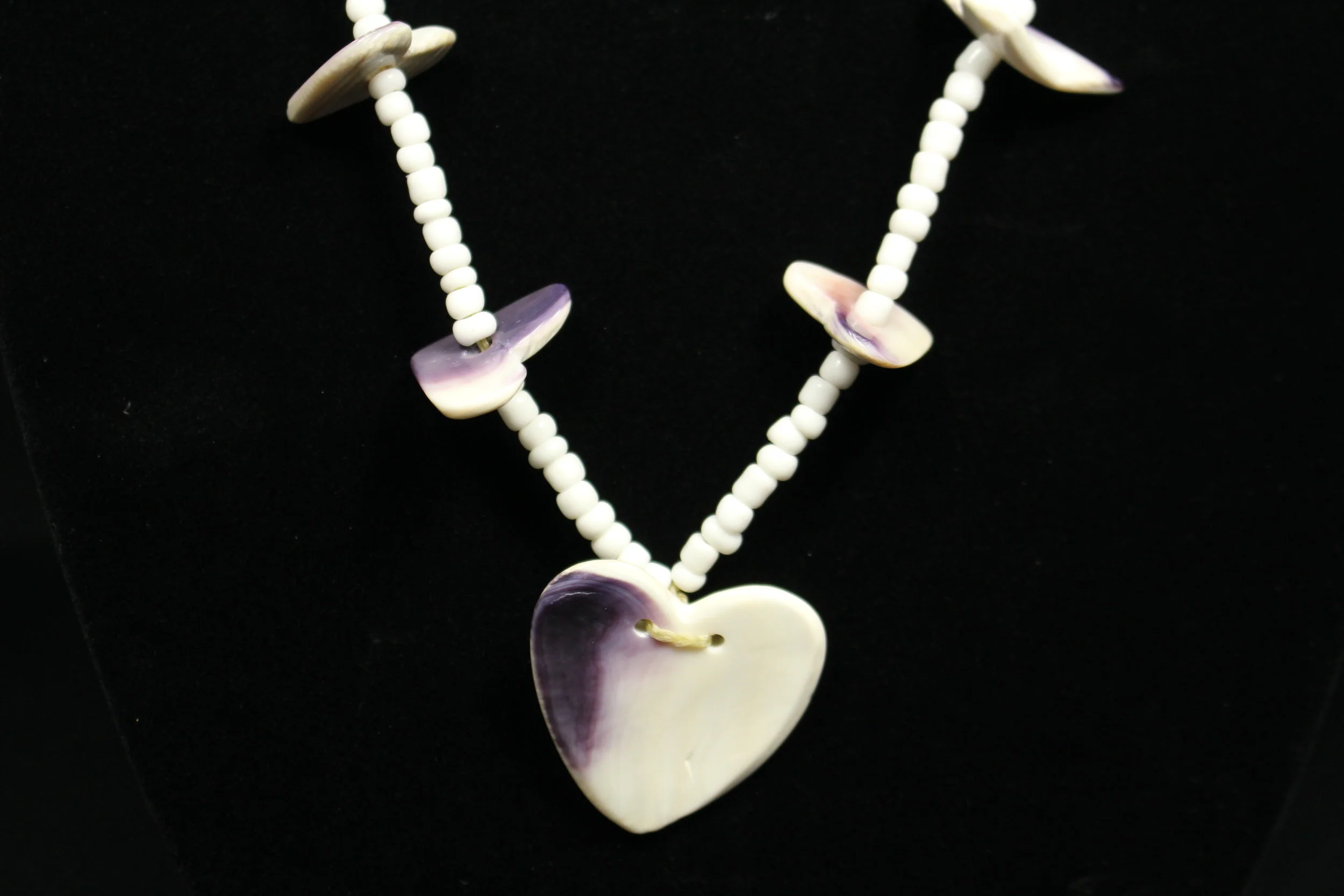




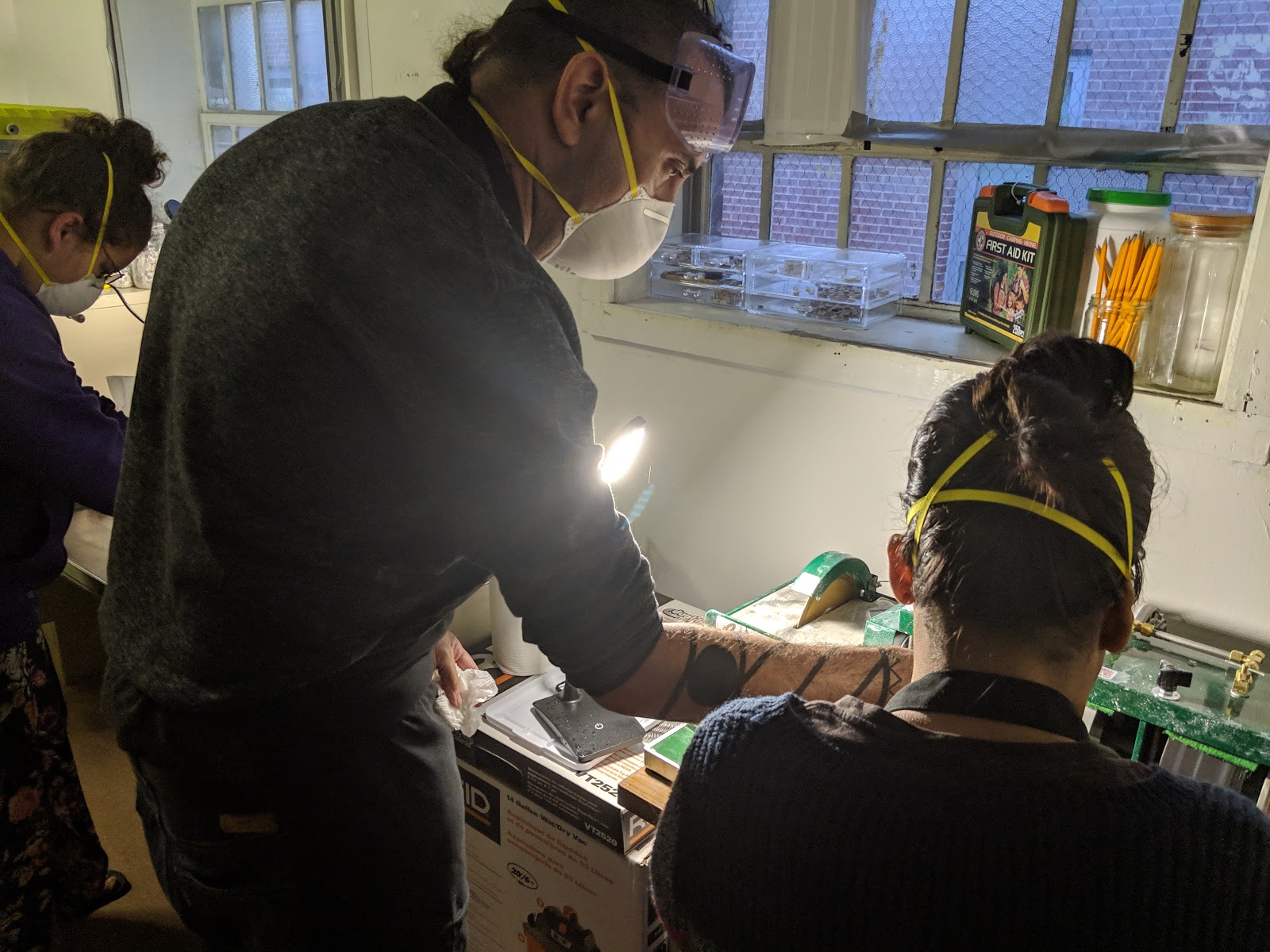




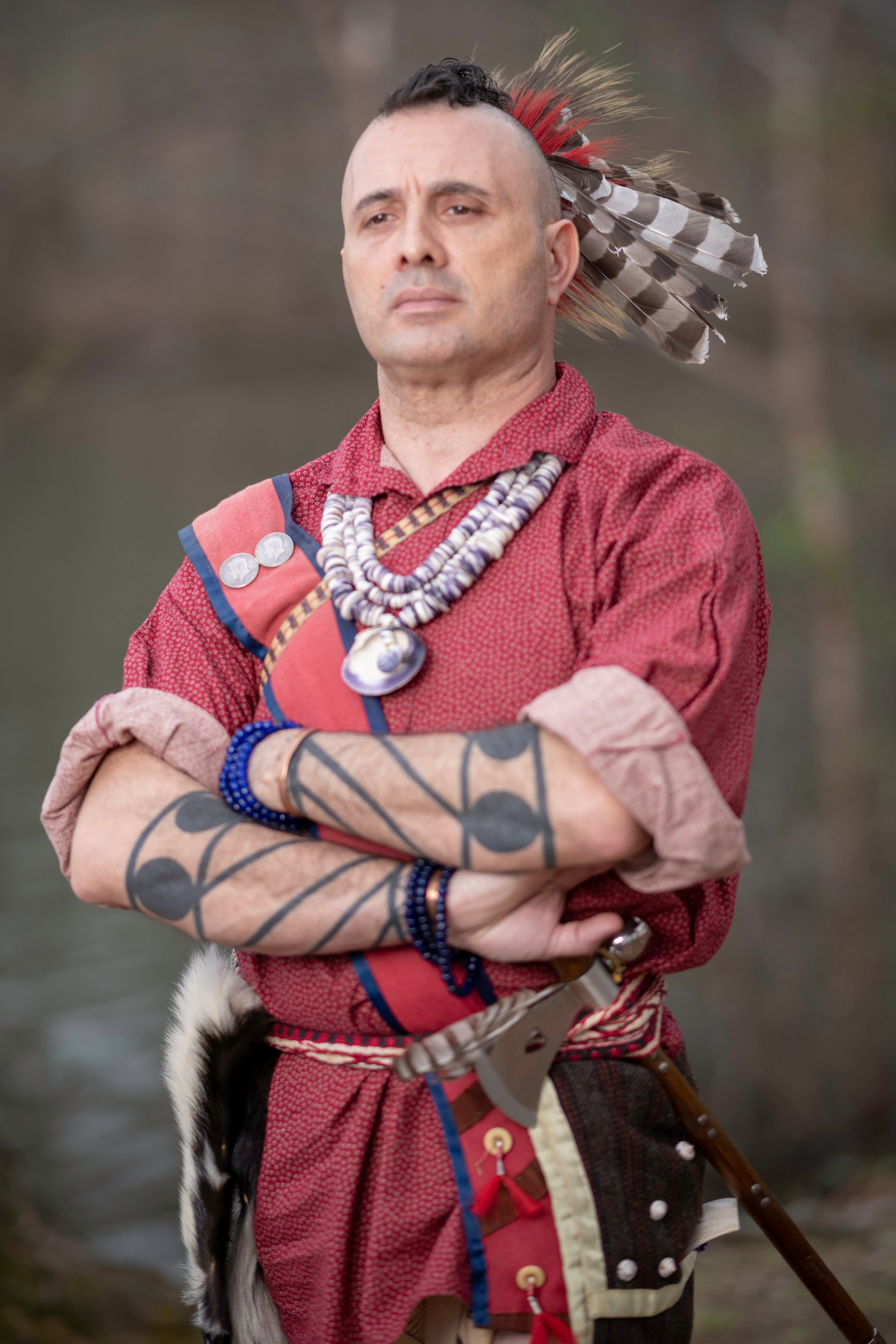



Instagram